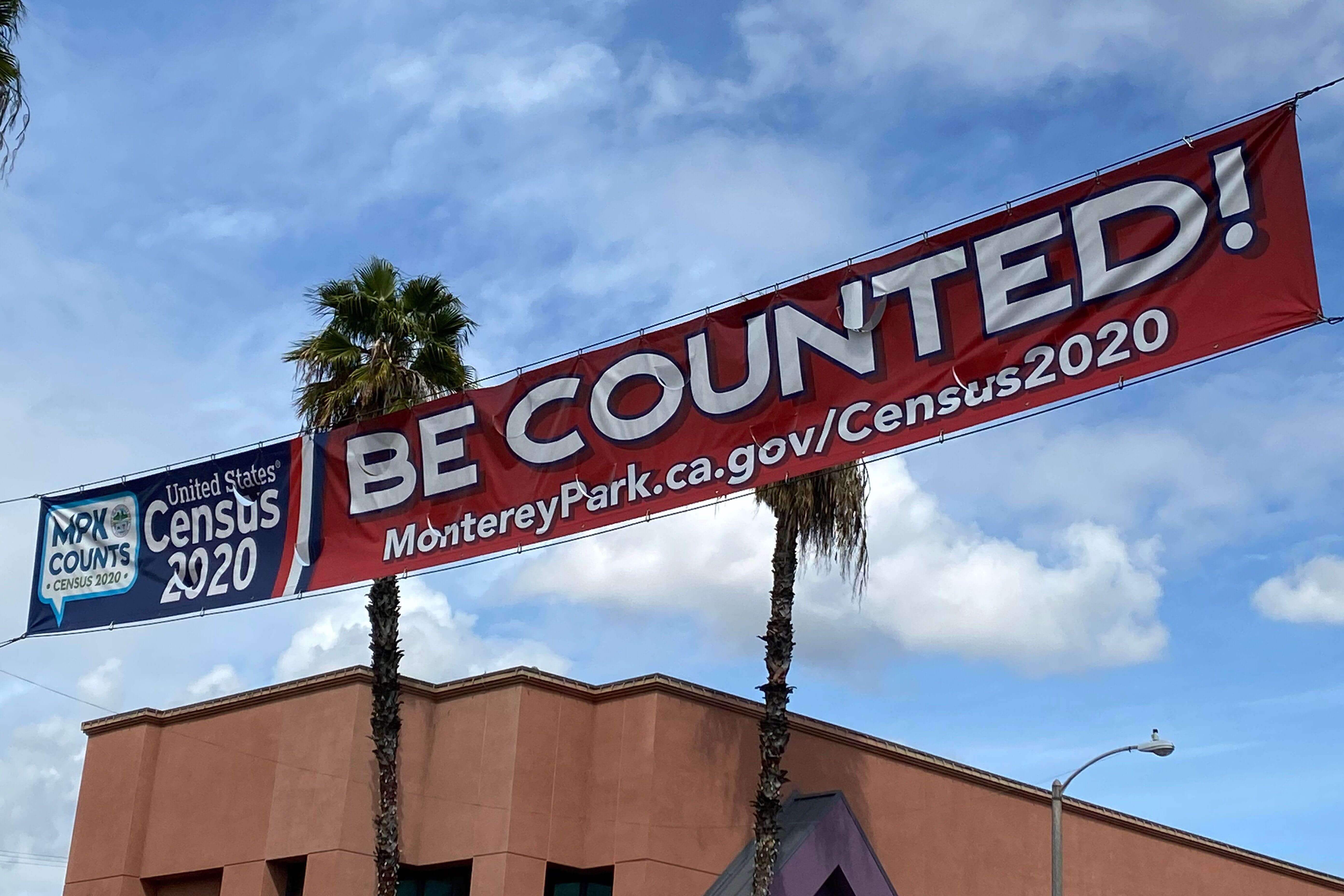A banner in Monterey Park, California, urging residents to “Be Counted!” in Census 2020
Census 2020 was just entering the “home stretch” when the coronavirus pandemic hit the United States. Preparations had been underway for years—the U.S. Census Bureau, which is part of the Commerce Department, is a permanent agency, even though the census count is only done once a decade. Beginning in March, the Census Bureau mailed out invitations to complete the census to residences across the country. April 1 was Census Day, the official date for the count. Whether people respond before or after, the census determines who is counted and where on that date. The bureau began following up in mid-April by mailing out questionnaires to those who did not respond online or by phone.
The massive undertaking to try to count every person in the United States began with the remote Alaskan village of Toksook Bay in January. In response to the coronavirus pandemic, however, the Census Bureau asked Congress to allow it more time to complete the task. Door-to-door (that is, face-to-face) follow-up by census takers was postponed because of concerns for the personal safety of workers and the public. As a result, the August 15 data-collection deadline was pushed back to October 31. In May, the bureau began reopening its approximately 210 field offices, shuttered since mid-March. Efforts to count specialized segments of the population—homeless people, those without fixed addresses, Native Americans living on reservations, group residences like nursing homes—have been affected by the delay.
At the end of May, the bureau reported a “self-response” rate of about 60 percent nationwide. After all responses are in, the bureau still has to crunch the numbers. Delivery to the president of final census figures has been postponed to April 30, 2021—four months beyond the original deadline. State legislatures thus will receive population figures for the purpose of redrawing legislative districts as late as July 31.
The primary purpose of the census is to provide accurate population counts for each state in order to allocate seats in the U.S. House of Representatives, as mandated in the U.S. Constitution. After the 2010 census, ten states that saw population declines lost congressional representation to those that had seen growth in population in the 2000s—for example, Texas and Florida gained two apiece, while New York and Ohio each lost two congressional seats. The federal government also uses population-driven formulas to allocate billions of dollars each year to state, local, and tribal governments. These funds go to hospitals, schools, community centers, emergency services, and infrastructure.
Image credit: © European Sports Photo Agency/Alamy Stock Photo
Related Links:
- 2020 Census Operational Adjustments Due to COVID-19
Account of the direct impact of the coronavirus pandemic on the Census 2020 schedule; includes a helpful FAQ and map of Area Census Offices (ACOs).
(Source: 2020census.gov; accessed May 29, 2020) - Census 2020: Important Dates
Timeline of the census process.
(Source: 2020census.gov; accessed May 29, 2020) - Census 2020: 230 Years and Counting
Infographic comparing the current census with those since 1790.
(Source: 2020census.gov; accessed May 29, 2020) - Knocked Off Track by Coronavirus, Census Announces Delay in 2020 Count
Summary of the issues surrounding postponements in the Census 2020 process.
(Source: New York Times, April 13, 2020) - Census 2010: Gains and Losses in Congress
Chart showing shifts in congressional representation from the Northeast and Midwest to the South and West based on Census 2010, when U.S. population numbered 308,745,538.
(Source: New York Times archives; accessed May 29, 2020)




